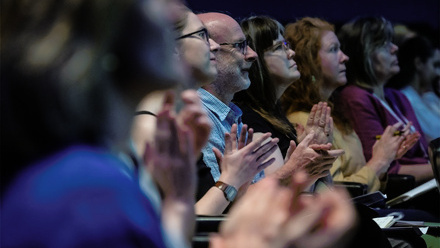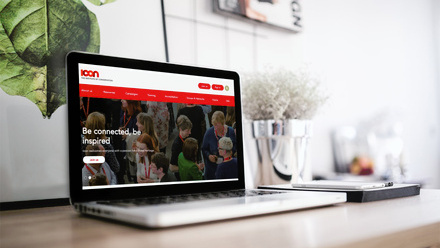Representing Knowledge in Data - Conservator’s Edition
The National Archives, UK
Thursday 10 November - Friday 11 November
9:30am - 5:30pm
Bessant Drive, Richmond, TW9 4DU
£300
A two day workshop on how to approach and organise structured conservation data
This two day workshop is provided by Kartography CIC, a social enterprise company managing the ResearchSpace system and represented by Cristina Giancristofaro. It is also supported by the Head of ResearchSpace at the British Museum, Dominic Oldman.
Structured data is information which is highly organised into a designed structure typically for computer processing. It is normally associated with spreadsheets and databases which store data in a tabular structure using technical data types like text, numbers and dates. Linked Data is a term used to describe another form of organising data. It is associated with open data publishing of existing data created in institutional databases allowing this data to be shared and ‘linked’ together. However, it has limited benefits without changing the way in which data is used and represents the world. Linked Data potentially provides a flexible structure that can support a richer form of data authoring, producing clearer, explicit meaning and sophisticated patterns and narratives of information, not simply producing a reference or finding aid. This method is called ‘knowledge representation’ and it addresses the limitations of traditional legacy databases and those of top down Linked Data.
With the right semantic framework, it can support effective and rich knowledge building containing a higher level of description of, for example, the historical context for conservation, and therefore greater benefits than traditional data tools. Knowledge workers and researchers, e.g., conservators, can better reflect information and associated processes in context (e.g. social and historic), and in a way that adapts to change and evolving processes, incorporating interdisciplinary and community knowledge. Such a semantic framework can also provide the means for a meaningful provenance of knowledge.
Book through Eventbrite HERE
Course Description
This two day course is designed for cultural heritage specialists and outlines issues with standard data tools. It describes practical methods for cultural heritage and humanities professionals to record knowledge in structured data forms, and ultimately in new semantic forms. It will show how data can be better designed for individual use but also support data collaboration and integration in interdisciplinary environments and with external community groups. You will learn how to create data for effective transformation into larger data stores.
For example, I am recording information as part of a personal project. Perhaps I need to record information about things, people or events and use a data structure that makes sense to me. I create a spreadsheet with various columns and start recording the information. Later I want to scale up the research and use it with other people's data in a larger network, but the data form and substance lacks the necessary elements for effective transformation. The data itself outgrows the assumptions and becomes less useful and ultimately obsolete. As such the data remains localised and underused.
In addressing these localised data issues the course then explores methods of representation that are semantically explicit. The meaning and logic is explicitly built into the data so that others can understand it and use it in their own systems or in shared systems. From a reductive functional abstract form it can be converted into a processural and contextual resource. The course will use CIDOC CRM which provides the semantic framework used across a whole range of cultural heritage and humanities disciplines to support interdisciplinary knowledge building.
Learning Objectives
- How to approach and organise structured data in general office tools such that they can easily be transformed later. For example if personal projects become bigger projects then having data that can be quickly and effectively moved to the next level.
- Understanding not simply what Linked Data is but how it supports semantic data which can support greater complexity and be reusable by different people and systems.
- Understand the CIDOC CRM ontology - its objectives, how it works and how it can enhance data oriented work at both qualitative and quantitative levels.
- Provide the information necessary to plan and implement semantic data projects.
- Provide people with the foundations for advanced courses in Semantic Data.
- Understand how these techniques change your perception of computers and how you work with them.
Equipment
A laptop will be required. Internet Access will be available.
Note
The course will involve some technical work (creating Semantic Linked data) which is used as a way of reinforcing an understanding of the subject area. It can also provide a platform for those interested in developing these skills further. The course will use real conservation data examples.
The course will include the following elements
Introduction & History - Is there a mismatch between our work and our computer information systems?
The basics problems of structured data - Using a simple spreadsheet we look at common data structure problems and how best to mitigate them.
Linked Data - What are the main constituents of the structure of Linked data including graphs, types, relations, namespaces and URIs. What are the myths?
Patterns of Knowledge - Examines the CIDOC CRM and some initial concepts. Event and Contextually driven thinking.
Semantics - A first look at converting abstract data to semantic data .
Using Semantic Data - Continuation of CIDOC CRM and collaborative modelling.
Thinking with Data - The dynamic construction of Knowledge Maps which represent the structure and substance of Semantic Data.
Creating context for practice and research - thinking about inclusion, diversity and interdisciplinary aspects to data.
Schedule
Each day we will start at 9:30 and finish at 5pm. There will be a tea break in the morning and in the afternoon and a lunch break in the middle of the day.
At The National Archives there is a cafe which sells hot lunches and sandwiches. There is a Costa and a Marks and Spencers in walking distance. If required we can offer to heat up food in the staff microwave.



